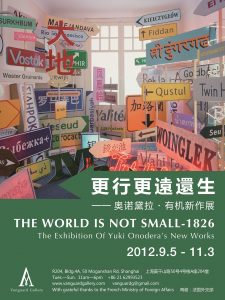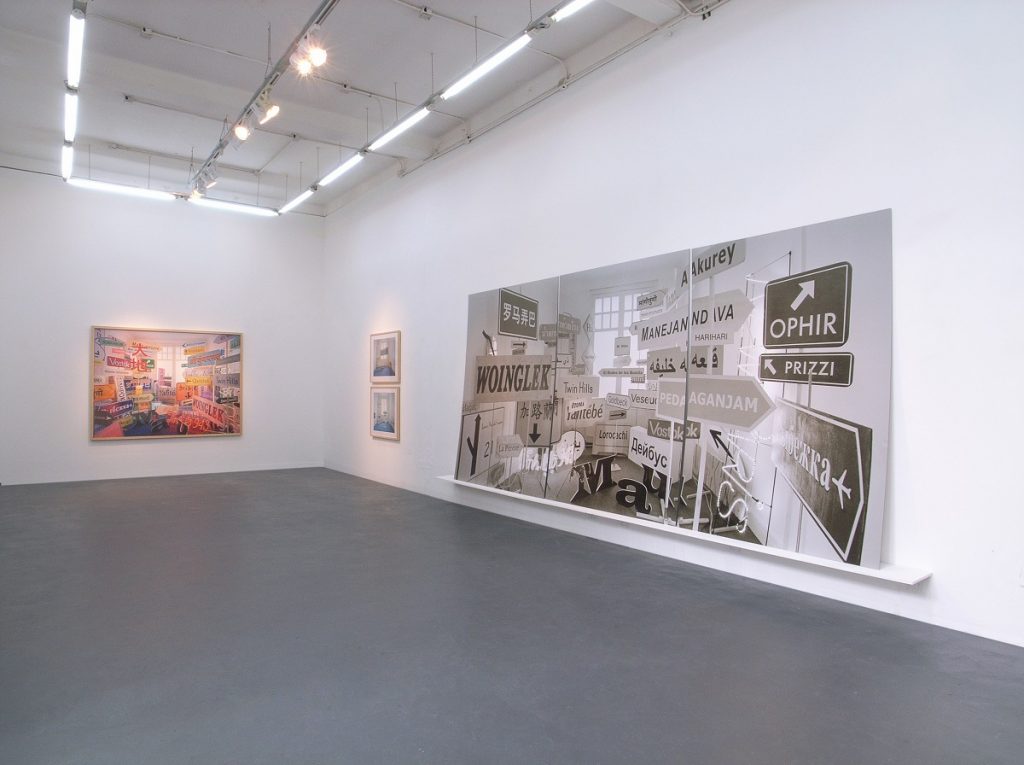艺术家:有机 . 奥诺黛拉
展期: 2012年9月5日-11月3日
开幕: 9月5日 5pm-8pm
地点: 上海市莫干山路50号4号楼A座204室, Vanguard画廊
电话: 21 62993523
《更行更远还生–奥诺黛拉·有机新作品展》9月5日将于Vanguard画廊隆重登场。这次将会展出奥诺黛拉今年刚刚拍摄完成的新系列《世界并不小-1826》中10幅左右的摄影作品,这也是奥诺黛拉继2008年的《12速》系列之后,时隔三年的全新力作。
新作品与奥诺黛拉之前一直在研究的「移动与身体」相关联,也是这个话题的延伸。2004年的作品「Roma-Roma」中,艺术家拍摄的并不是意大利的罗马,而是用立体相机的两个镜头分别拍摄的另外的两个罗马。而在其2006年的作品「Below Orpheus」中,奥诺黛拉则是赶赴了失踪事件和超人传说的发生地,地球上与之经纬度相反的另一点,用照片记录下了这相隔最远的两地。
然而新作里奥诺黛拉并没有去哪里,取而代之的,她收集了世界各处的地名,用这些地名制作了像指示牌似的标牌,将它们放置在有窗的房间进行拍摄,让人觉得整个房间都充斥着一种“某处就是文字”的感觉。整个场景宛如标志的海洋一般,及其具有超现实主义的意境。将目光移向透着光的白色窗子,再看光对面的那些标志牌,发挥你的想象力,它们连绵不绝地延伸到远方。可是,究竟文字能不能作为被拍摄的对象呢?艺术家在拍摄的过程中也在反复追问自己。
那些与我们相隔很远的极寒和极热的地方,亦或是沙漠的地方,在奥诺黛拉的工作室里被抽象成不同语言文字的标牌,并分别以不同的方位角度排列在了一起。这些名字中包含着构成它们的山川、河流和山谷等,还有花名、人名甚至是虚构的动物名也同样被包含在其中。如果将这些作为拍摄素材的地名作为一个个的演员的话,那么整个房间立刻就变成了一个剧场空间。我们可以凝视着这些地名,自由自在地发挥着对于他们所代表的远方的无限遐想。由此,我们可以清晰的发现,新作是架构在艺术家一直关注的“移动与身体”这个条线索上的。
在当今用网络瞬间获取远方景象的时代,让人觉得地球好像缩小了一样。然而,这些谁都可以轻而易举尽收于眼底的风景,不也恰恰夺走了我们的想象力吗。现在我们却可以透过奥诺黛拉的作品,透过她追忆的那段照片发明前的时光,感受着她对那段旧时美好的回忆。在现在这个快节奏的生活中,看看这些代表着地名的文字,并被它们引领着神游远方,不正是可以让我们享受片刻宁静吗?
展览将持续至11月3日,期待您与我们一起踏上奥诺黛拉的地名之旅。






